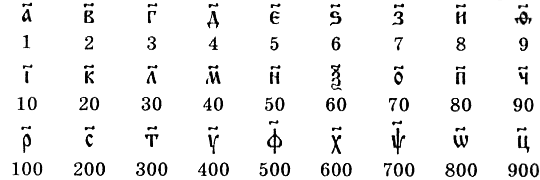Designation of the year on old Russian coins
Having once picked up one kopeck from the reign of Emperor Peter I, I was a little puzzled. I couldn’t find the year on the coin even after I washed it thoroughly. The Arabic numbers that are familiar to our eyes were indeed not placed on them.
The fact is that until 1722, on Russian coins, the year was indicated by letters of the old Cyrillic alphabet. Moreover, this was in the order of things for other languages. Just remember Latin.
To distinguish letters from numbers, a special symbol — was placed above the letters denoting numbers. wavy line or «tilde» (~). If we look at the table below, we can easily notice that not all letters of the alphabet are used to represent numbers. This is due to the Greek origin of this system — letters not found in the Greek alphabet (such as «B» and «ZH») are not used.

Now take a look at your Peter’s coins. You, of course, noticed this diagonal stick, crossed out in two places. This symbol increases the value of the number following it by a thousand times. Thus «az» turns into «1000». This is what it looks like on coins.

For more useful information read next…
